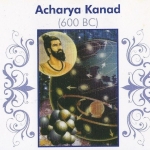The contributions made by ancient Indians in the field of Mathematics and Science, including Medical Science, Ayurveda, Yoga,Astronomy, Astrology, etc. are immense and as proud Indians we must have knowledge of them. Questions related to this topic are seen in every exam. Therefore for the benefit of all aspirants of competitive exams, we are bringing out details of the noted scientists of ancient India.
MATHEMATICS & ASTRONOMY:
Science and Mathematics were highly developed during the ancient times in India. There were immense contributions to the fields of Mathematics as well as various branches of Science. Some notable contributors of whom everyone should know:
Aryabhatta:
- Aryabhatta was a fifth century mathematician, astronomer, astrologer and physicist.
- He was also a pioneer in the field of mathematics.
- He wrote Aryabhattiya, which is a summary of mathematics of his time. It has four sections. In the first section he describes the method of denoting big decimal numbers by alphabets.
- In the second section, we find difficult questions from topics of modern day Mathematics such as number theory, geometry, trigonometry and algebra.
- Aryabhatta and Zero : He showed that zero was not just a numeral but also a symbol and a concept. He found out the exact distance between the earth and the moon. The discovery of zero also opened up a new dimension of negative numerals.
- The remaining two sections of Aryabhattiya are on astronomy, also called Khagol-shastra, (Khagol was the famous astronomical observatory at Nalanda, where Aryabhatta studied).
- The need for the development of the science of astronomy was it was required to have accurate calendars, a better understanding of climate and rainfall patterns for timely sowing and choice of crops, fixing the dates of seasons and festivals, navigation, calculation of time and casting of horoscopes for use in astrology.
- Knowledge of astronomy, particularly knowledge of the tides and the stars, was of great importance in trade, because of the requirement of crossing the oceans and deserts during night time.
- He disregarded the view that our planet is ‘Achala’ (immovable), and stated his theory that ‘ earth is round and rotates on its own axis’. He explained that the appearance of the sun moving from east to west is false by giving examples. One such example was: When a person travels in a boat, the trees on the shore appear to move in the opposite direction.
- He also stated that the moon and the planets are shined by reflected sunlight, which was proved later in modern times.
- He also gave a scientific explanation for solar and lunar eclipse clearing the notion that the eclipse were happening because of Rahhu or Ketu or some other rakshasa (demon).
- Therefore, India’s first satellite sent into orbit has been named after Aryabhatta.
Baudhayan:
- Baudhayan was the first one ever to arrive at several concepts in Mathematics, which were later rediscovered by the western world.
- The value of pi was first calculated by him. pi is useful in calculations of the area and circumference of a circle.
- Baudhayan’s Sulva Sutra mentioned what is today known as Pythagoras theoram years before him.
Brahmgupta:
- In 7th century, Brahmgupta developed methods of multiplication, he used place value in almost the same way as it is used today.
- He also introduced negative numbers and operations on zero.
- He wrote BrahmSputa Siddantika through which the Arabs came to know of our mathematical system.
Bhaskaracharya:
- Bhaskaracharya came in 12th Century, born in Bijapur, Karnataka.
- He is famous for his book Siddanta Shiromani.
- It is divided into four sections namely: Lilavati (Arithmetic), Beejaganit (Algebra), Goladhyaya (Sphere) and Grahaganit (mathematics of planets).
- Bhaskara introduced Chakrawat Method or the Cyclic Method to solve algebraic equations. This method was the rediscovered six centuries later by European mathematicians, then called inverse cycle.
- In the nineteenth century, James Taylor, translated Lilavati and the world came to know of this great work.
Mahaviracharya:
- There is an elaborate description of mathematics in Jain literature (500 B.C -100 B.C).
- Jain Guru Mahaviracharya wrote Ganit Sara Sangraha in 850A.D., which is the first textbook on arithmetic in present day form.
- The present method of solving Least common Multiple (LCM) of given numbers was also described by him.
- Therefore, long before John Napier introduced LCM to the world, it was known to Indians. Also, Jain gurus knew how to solve quadratic equations. They have also described fractions, algebraic equations, series, set theory, logarithms and exponents in a very interesting manner.
SCIENCE
As in Mathematics, ancient Indians had contributed to the knowledge in Scienc as well.
Kanad:
- Kanad was a sixth century scientist of Vaisheshika School of philosophy, one of the six systems of Indian philosophy.
- He develped atomic theory which matches with any modern atomic theory.
- According to Kanad, material universe is made up of kana (anu/atom), which cannot be seen through any human senses. These cannot be further subdivided. Thus, they are indivisible and indestructible.
Varahamihira:
- Varahamihira was a well known scientist of the Gupta period.
- Varahamihira was one of the nine gems, in the court of Vikramaditya. Varahamihira’s predictions were so accurate that king Vikramaditya gave him the title of ‘Varaha’.
- Varahamihira made contributions in the fields of hydrology, geology and ecology.
- Termite theory: He was one of the first scientists to claim that termites and plants could be the indicators of the presence of underground water.He gave a list of six animals and thirty plants, which could indicate the presence of water. He gave very important information regarding termites (Deemak or insects that destroy wood), that they go very deep to the surface of water level to bring water to keep their houses (bambis) wet.
- Earthquake cloud theory: Contribution to the world of science is given by Varahmihira in his book Brhat Samhita. The thirty second chapter of this samhita is devoted to signs of earthquakes – the influence of planets, undersea activities, underground water, unusual cloud formation and abnormal behaviour of animals.
- Varahamihira’s contribution is worth mentioning in Jyotish or Astrology. He deveoped the science of astrology as is used in present form.
Nagarjuna
- Nagarjuna was a tenth century scientist with work in alchemy.
- Till today, his technology of making material with gold like shine is used in making imitation jewelry.
- In his book, Rasaratnakara, he has also discussed methods for the extraction of metals like gold, silver, tin and copper.
MEDICAL SCIENCE IN ANCIENT INDIA (AYURVEDA & YOGA)
Medical Science was highly developed in ancient times. Ayurveda, an indigenous system of medicine that was developed in Ancient India. The word “Ayurveda” literally means the science of good health and longevity of life. It is the oldest medical system of our planet. Susruta, Charak, Madhava, Vagbhatta and Jeevak were notable ayurvedic practitioners of ancient India.
The oldest medical book of the world – Atreya Samhita. Charak is called the father of ayurvedic medicine and Susruta the father of surgery.
Susruta:
- Susruta is considered a pioneer in the field of surgery. He believed surgery to be “the highest division of the healing arts and least liable to fallacy”.
- He studied human anatomy with the help of a dead body.
- In Susruta Samhita , he has described over 1100 diseases including fevers of 26 kinds, jaundice of 8 kinds and urinary ailments of 20 kinds.
- In Susruta Samhita , the method of selecting and preserving a dead body for the purpose of its detailed study are also described.
- Susruta’s greatest contribution was in the fields of Rhinoplasty (plastic surgery) and Ophthalmic surgery (removal of cataracts). Restoration of limbs lost in wars was done by him.
- Susruta Samhita also gives a description of 101 instruments used in surgery. Some serious operations performed included taking foetus out of the womb, repairing the damaged rectum, removing stone from the bladder, etc.
Charak:
- Charak is considered the father of ancient Indian science of medicine.
- He was the Raj Vaidya (royal doctor) in the court of Kanishka.
- His book, Charak Samhita is an elaborate book on medicine. It has the description of a large number of diseases and gives methods of identifying their causes as well as their treatment.
- In Charak Samhita, more stress has been laid on removing the causes of disease rather than simply treating the symptoms of illness.
- Charak also had knowledge of the fundamentals of Genetics. The modern day genetics was started by Mendel.
Yoga & Patanjali:
- The science of Yoga has been developed in ancient India as a subsidiary science of Ayurveda, for healing without medication at the physical and mental level.
- The credit of systematically presenting this science of yoga goes to Patanjali.
- In the Yoga Sutras of Patanjali, Om is spoken of as the symbol of God.
- He refers to OM as a cosmic sound, continuously flowing through the everything, fully known only to the illuminated.
- Besides Yoga Sutras , Patanjali also wrote a work on medicine and worked on Panini’s grammar known as Mahabhasaya.





